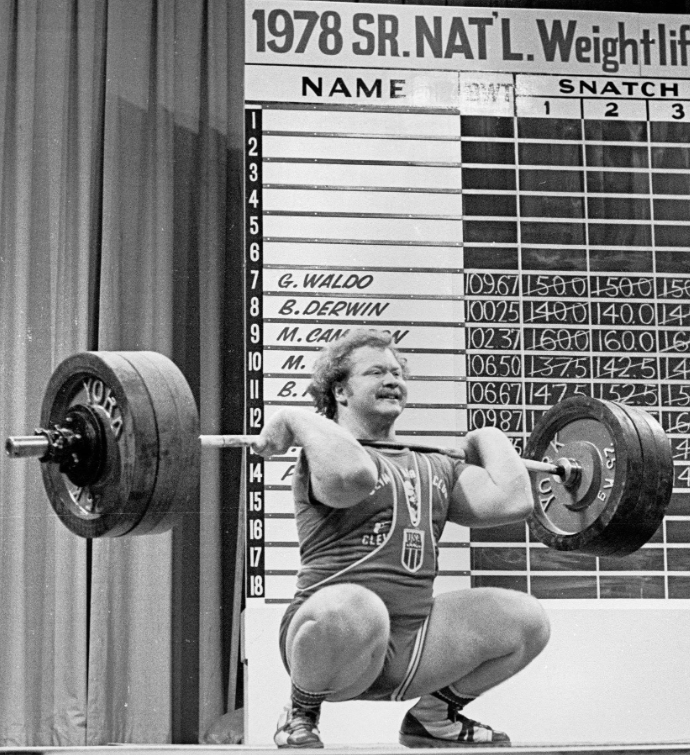Welcome and thanks for visiting...

The Myth of Being "Muscle Bound"

To see this video, you must be a member. Membership options:
Free - newsletter, video & blog access,
earn

Yearly - full access & member features
earn 5x

US$179 - may be lower outside US
Lifetime - same as yearly, but forever
earn 10x

US$350 - may be lower outside US
earn

Yearly - full access & member features
earn 5x

US$179 - may be lower outside US
Lifetime - same as yearly, but forever
earn 10x

US$350 - may be lower outside US
MySportsEdTV is a community where people share their passion for sports. It’s a place where athletes, coaches and parents can share information and share experiences. It’s a place to make new friends across the globe. Members have access to great features unavailable to non-members. Members receive helpful information via our FREE email newsletters. We always respect your privacy and your data will not be sold or shared
To use this function, you must be a full member. Membership options:
Free - newsletter, all video & blog access
Yearly - full access & member features
US$179 - may be lower outside US
Lifetime - same as yearly, but forever
US$350 - may be lower outside US
You may also use a promo code for payment
Yearly - full access & member features
US$179 - may be lower outside US
Lifetime - same as yearly, but forever
US$350 - may be lower outside US
You may also use a promo code for payment
MYSportsEdTV is a community where athletes, coaches and parents connect and share their sport passion. We don’t sell our member data or send spam. Members will receive our FREE email newsletter to alert you about new video and blog content for the sports you follow.
To use this function, you must be a paid member. Membership options:
Free - newsletter, all video & blog access
Yearly - full access & member features
US$179 - may be lower outside US
Lifetime - same as yearly, but forever
US$350 - may be lower outside US
You may also use a promo code for payment
Yearly - full access & member features
US$179 - may be lower outside US
Lifetime - same as yearly, but forever
US$350 - may be lower outside US
You may also use a promo code for payment
MYSportsEdTV is a community where athletes, coaches and parents connect and share their sport passion. We don’t sell our member data or send spam. Members will receive our FREE email newsletter to alert you about new video and blog content for the sports you follow.
Historical Resistance to Weight Training
It may be hard for today’s lifting and fitness communities to assimilate. Still, at one time in the history of our USA physical education, weight training was a forbidden subject in physical education curricula. Athletes were forbidden to train with weights. Instructors were not allowed to learn about resistance training.
Until the 1960s or 1970s, colleges and universities did not offer weight training classes, and many lacked any functional weight room. University-level physical education staff did not know resistance training methodologies. Those institutions that did offer weight training classes for the general student body forbade athletes from resistance training.
The Fear of Becoming "Muscle Bound"
The reason for this was a phenomenon called “muscle-bound.” In those days, weight training took place in private gyms, and many of the practitioners did not participate in any other forms of training and primarily performed bodybuilding exercises. In most cases, bodybuilding training inhibited joint mobility, and little was done to develop the neuroinhibition of antagonists or the contraction of synergists. The result was a physically strong individual who could only function within limited ranges of movement and was neither quick nor powerful. This condition came to be known as “muscle-bound.”
Impact on Athletes
As a result, sports coaches at all levels prohibited their athletes from weight training. I personally coached an excellent athlete, Ray Blaha (who won the 1977 Weightlifting Nationals), who was a football and baseball athlete in high school. He was training for weightlifting at the Olympic Health Club in Cleveland, Ohio. When his coaches found out that he was weight training on his own, he was dropped from both sports. Ray’s story was not unique.

Bruce Klemens Classic Weightlifting Photography
The Benefits of Weightlifting
Weightlifting (snatches and clean & jerks) requires concentric, isometric, eccentric, and neuromuscular inhibition of antagonists. Most readers are familiar with all the concentric contractions (including high recruitment rates) taking place during the course of performing the classic lifts. The torso musculature primarily performs isometric contractions in order to provide the stability of bracing. Eccentric contractions are in place during the dip for the jerk drive as well as the amortization of the snatch and clean. Neuroinhibition of the antagonists takes place in the knee and hip flexors during the rapid hip extension of the pull.
Encouragement for Practitioners
Because snatches, cleans, and jerks require concentric, eccentric, and isometric contractions as well as inhibition of antagonists, they are relatively challenging to master, but they are equally as productive for mastery of the body for athletic activities. They employ not just the muscles but also the nervous system in very productive ways. They are also remarkably efficient for training the body overall.
So keep snatching, cleaning, and jerking. They are the most productive movements you can perform.







